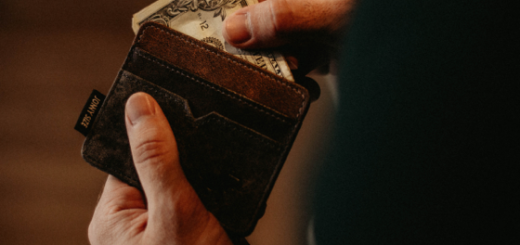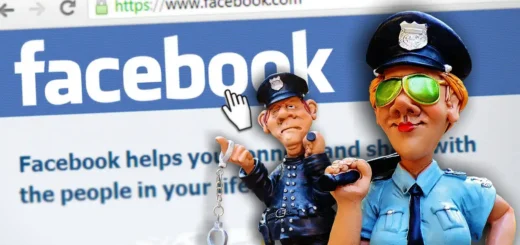How Podcasting Builds Customer Relationships (and How Video Supercharges Them)
 Creating and maintaining strong relationships with prospects and customers is crucial for building a successful business, and one of the most effective ways to do this is through podcasting.
Creating and maintaining strong relationships with prospects and customers is crucial for building a successful business, and one of the most effective ways to do this is through podcasting.
Podcasts allow you to connect with your audience on a personal level, establish trust, and share valuable content that resonates with them.
But while audio podcasts have proven to be powerful tools for relationship building, video podcasts take it to the next level.
In this guide, we’ll explore why podcasting is so effective at building relationships, how video podcasting can enhance these connections even further, and how you can use video podcasting to grow your audience and your business.
The Power of Podcasting in Building Relationships
Podcasting has become a popular medium for sharing information, telling stories, and connecting with audiences. The intimate nature of podcasts—where listeners often tune in while driving, exercising, or relaxing at home—creates a unique opportunity to build a relationship with your audience. Here’s why podcasting is so effective:
- Authenticity and Trust: Podcasts provide a platform where you can speak directly to your audience. Your voice, tone, and personality come through, creating a sense of authenticity that can be hard to achieve through other mediums. Over time, listeners start to feel like they know you, which helps build trust.
- Consistency: Regularly releasing podcast episodes allows you to stay in touch with your audience consistently. Whether it’s weekly, bi-weekly, or monthly, this consistent presence helps you stay top-of-mind with your listeners.
- In-Depth Content: Podcasts offer the opportunity to dive deep into topics that matter to your audience. This in-depth content can position you as an expert in your field, further strengthening your relationship with listeners.
- Intimacy: Think about it… you’re in your listeners ear while they drive, work out, clean house, do yard work or relax. You are as much a part of their day as their favorite TV show or song list. It’s almost like you’re there with them, having a very personal and engaging conversation about something vitally interesting to them.
Why Video Podcasting is Even Better
While audio podcasts are great for building relationships, video podcasting adds an extra layer of connection. Here’s why video podcasting can be even more powerful:
- Visual Connection: Seeing someone’s face while they talk can significantly enhance the connection between the speaker and the audience. Facial expressions, body language, and eye contact add depth to the conversation, making it feel more personal and engaging.
- Enhanced Engagement: Video content is more engaging than audio alone. Viewers are more likely to pay attention and stay focused when they can see the person speaking. This increased engagement can lead to stronger relationships with your audience.
- Wider Reach: Video podcasts can be shared on multiple platforms, including YouTube, social media, and your website. This increases your visibility and allows you to reach a broader audience.
- Repurposing Content: With video podcasts, you can easily repurpose content into shorter clips*, quotes, and images to share on social media. This not only saves time but also helps keep your audience engaged across different platforms.
- *YouTube Shorts: This one is worth its own point – video shorts on YouTube, Instagram, TikTok and elsewhere are HOT. And by using the best clips from your Video Podcast, you can easily push out short videos that get noticed. Use a tool such as GetMunch.com or Vidyo.ai to chop your long videos into short form video clips. These programs will even determine which of your clips have the best viral potential.
- Top of Funnel Discovery Tools: Both your long and short form videos are going to be great introductions to you and your niche. People will find these videos, subscribe and become your audience as well as your customers.
- You’ll Achieve Omnipresence: This is the ‘being everywhere’ effect where people discover you in multiple locations. They might start on your podcast, see one of your video shorts and move on to your video podcasts or your blog. The point is the repetition helps you to build deeper connections, faster. Think of Coca-Cola ads on TV, print and the internet and you get the idea.
How to Use Video Podcasting to Build an Audience and a Business
Now that you understand the benefits of video podcasting, let’s dive into how you can use this medium to grow your audience and build a successful business.
- Define Your Niche and Audience
The first step in launching a video podcast is to clearly define your niche and target audience. Understanding who you’re speaking to will help you create content that resonates with them. Think about what topics your audience is interested in, what challenges they face, and how you can provide value through your podcast.
- Invest in Quality Equipment
While you don’t need to break the bank, investing in decent video and audio equipment is essential for producing a high-quality video podcast. A good camera, microphone, and lighting setup can make a significant difference in the overall production value, which can help you stand out from the competition.
Because your podcast in video, you’ll want a professional looking backdrop that’s interesting to look at but not overly distracting from what you’ll be saying.
- Plan Your Content
Planning your content in advance is crucial for maintaining consistency and ensuring that your episodes provide value to your audience. Use ChatGPT to create a list of podcast topics by using this prompt: “You’re an expert content creator in the ___ niche. List 50 podcast topics about ___ for an audience of ___.” Choose the topics you like best, and one by one have Chap GPT make an outline for each chosen topic. Then go back and add in your own personal anecdotes, advice and so forth to the outline.
Create a content calendar and outline your episodes ahead of time. Consider inviting guests who can offer additional insights and perspectives, which can also help you tap into their audiences.
- Engage with Your Audience
Building relationships through video podcasting isn’t just about talking at your audience—it’s about engaging with them. Encourage viewers to leave comments, ask questions, and share their thoughts. Respond to their feedback and create content that addresses their needs and interests.
- Promote Your Video Podcast
Promotion is key to growing your audience. Share your episodes across all your social media channels, embed them on your website, and encourage your guests to share them with their networks. You can also consider running paid ads to reach a broader audience. Don’t forget to optimize your video titles, descriptions, and tags for SEO to help people find your content.
- Monetize Your Podcast
Once you’ve built an audience, there are several ways to monetize your video podcast. You can offer premium content, such as exclusive episodes or behind-the-scenes access, through a subscription model. You can also explore sponsorships, partnerships, and affiliate marketing opportunities that align with your brand and audience.
- Measure Your Success and Adapt
Regularly review your podcast’s performance by tracking metrics such as views, engagement, and audience growth. Use this data to refine your content strategy and make improvements where necessary. Being adaptable and responsive to your audience’s needs will help you continue building strong relationships and growing your business.
Examples
I could share endless tips on creating a successful video podcast, but sometimes the best way to learn is by watching how others are doing it and following their lead.
Here’s a list of some of the best video podcasters on YouTube, categorized by funny, marketing, education, and motivational:
Funny
- “H3 Podcast” by Ethan and Hila Klein
This podcast blends humor with interviews, pop culture commentary, and candid discussions. - “Tiny Meat Gang” by Cody Ko and Noel Miller
Comedians Cody and Noel deliver hilarious commentary on internet culture, relationships, and more. - “The Joe Rogan Experience” by Joe Rogan (Comedy Episodes)
While Joe covers many topics, his episodes with comedians like Bill Burr and Dave Chappelle are particularly funny.
Marketing
- “Marketing Over Coffee” by John Wall and Christopher Penn
This podcast covers the latest in digital marketing and features insightful discussions with industry experts. - “GaryVee Audio Experience” by Gary Vaynerchuk
Gary Vee shares his marketing wisdom with a mix of motivational rants, business advice, and marketing strategies. - “The Smart Passive Income Podcast” by Pat Flynn
Pat Flynn offers practical advice on online marketing, entrepreneurship, and building passive income streams.
Education
- “Crash Course” by Hank and John Green
This popular educational channel offers a wide range of topics, from history to science, explained in a fun and engaging way. - “TED Talks”
TED Talks cover a broad range of educational topics, with experts sharing insights on technology, entertainment, and design. - “Veritasium” by Derek Muller
This science-based podcast explores interesting and complex topics in a way that’s easy to understand and visually engaging.
Motivational
- “Impact Theory” by Tom Bilyeu
Tom Bilyeu interviews top performers from all walks of life, offering motivational insights and life-changing advice. - “The School of Greatness” by Lewis Howes
Lewis Howes interviews some of the world’s most successful people, providing inspiration and practical tips for personal growth. - “The Tony Robbins Podcast”
Tony Robbins shares motivational strategies, interviews with successful individuals, and advice on achieving personal and professional goals.
This list draws inspiration from the top video podcasts on YouTube, offering a mix of entertainment, education, and practical advice.
The Rise of Fake Podcasting: A Clever Content Strategy
Not everyone has the time or energy to sit down and record long-form podcasts. Maybe you’re one of those people—you want to connect with your audience, but the idea of managing a full-blown podcast feels overwhelming.
If that sounds like you, here’s a creative solution straight from social media expert Vanessa Lau: Consider creating a “fake” podcast.
Fake podcasting is exactly what it sounds like. You don’t actually need to have a real podcast, or even record a full episode.
All you need is a microphone (whether it’s plugged in or not) and a camera. Simply position the mic at a flattering angle and start talking as if you’re hosting a podcast interview. The illusion of a podcast is enough to capture your audience’s attention.
This approach has proven surprisingly effective. Metrics often show high engagement and retention rates for these types of videos. It gives viewers the sense that they’re getting an inside look at a conversation, even if it’s just you speaking to the camera.
One of the biggest benefits of fake podcasting is that it requires minimal setup and zero commitment to a regular publishing schedule. You can create these videos whenever you have something valuable to say, without the pressure of maintaining a full podcast.
However, a word of caution: Make sure your mic is actually plugged in if you’re going to use one. While the unplugged mic trick works for some, it can also backfire if viewers catch on and start calling you out in the comments.
But even then, the engagement you receive might just be worth it.
So, if you’re not ready to dive into the world of podcasting just yet, fake podcasting might be the perfect way to dip your toes in the water. It’s a low-effort, high-reward strategy that can help you build your audience and keep them engaged.
Give it a shot and see how it works for you.
Post Video Shorts Often, Regardless of Platform
If you really want to grow on social media, consistency is key. Posting at least one short-form video per day can make a huge difference in your growth.
For example, those who stick to a daily posting schedule often see their follower counts skyrocket in just a few months. In contrast, those who only post once a week typically experience much slower growth, often gaining just a handful of followers.
The bottom line? If you’re serious about expanding your reach with video shorts, make daily short-form video posts a priority.
The Goldilocks Principle: Why Short Videos Shouldn’t Be Too Short
Short videos have taken the internet by storm, becoming the go-to format for quick entertainment, education, and even marketing. Platforms like TikTok, YouTube Shorts, and Instagram Reels have made it easier than ever to create and consume bite-sized content.
But here’s the catch: There’s a fine line between short and too short.
In the past, ultra-short videos—sometimes just a few seconds long—were all the rage. Creators and marketers were encouraged to keep things as brief as possible, thinking that shorter was better.
However, as we move into late 2024, the landscape is shifting. Now, the sweet spot for short videos is somewhere between 1 to 3 minutes long.
Why the change? It turns out that monetizing super short videos is a major challenge. Platforms are struggling to slot ads into clips that are just a few seconds long. Ads need time to make an impact, and when a video is over before you can even blink, there’s little room for monetization.
This has led platforms like TikTok, YouTube, and Instagram to start promoting videos that are slightly longer, giving them more opportunities to insert ads and keep their business models afloat.
For creators, this shift means rethinking your content strategy. Instead of focusing on how short you can make your videos, aim for that 1 to 3-minute range. This length is long enough to deliver valuable content and engage your audience, while still being short enough to hold their attention.
Plus, slightly longer videos give you more time to connect with your viewers, tell a story, or get your message across. It’s a win-win: you get more time to showcase your content, and the platforms have a better chance to monetize it, which in turn supports your work.
So, as you plan your video content for 2024, remember the Goldilocks principle: make your videos short, but not too short. Find that sweet spot, and you’ll not only keep your audience engaged but also align with what platforms are prioritizing for better visibility and monetization.
Video Podcasting Tips from Seasoned Pros
Here are 20 unique and lesser-known tips for video podcasting, focusing on tools, techniques, and creative strategies to help your podcast stand out:
1: Use a Teleprompter App: For smoother delivery, use a teleprompter app like Teleprompt+ or PromptSmart Studio. These apps scroll your script as you speak, allowing you to maintain eye contact with the camera.
2: Incorporate B-Roll Footage: Enhance your video podcast by adding B-roll footage relevant to your topic. Use tools like Storyblocks or Artgrid to source high-quality clips that visually support your discussion.
3: Use Animated Lower Thirds: Tools like Adobe After Effects or Canva Pro allow you to create custom lower thirds to introduce speakers or highlight key points dynamically.
4: Try Split-Screen Interviews: Tools like Riverside.fm or Ecamm Live offer split-screen layouts that keep both the host and guest in view, creating a more engaging visual experience during interviews.
5: Leverage Virtual Backgrounds: Use tools like XSplit VCam or Zoom’s virtual background feature to create a branded or themed background without needing a physical set.
6: Use Dynamic Overlays: Incorporate dynamic overlays using software like OBS Studio or Streamlabs. Add live comments, pop-up graphics, or real-time polls to engage your audience.
7: Integrate Live Sound Effects: Spice up your podcast with live sound effects using a soundboard app like Rodecaster Pro or Soundboard Studio. This adds an entertaining layer to your content.
8: Use a Stream Deck: Elgato Stream Deck allows you to control your podcasting setup with the press of a button. You can switch scenes, trigger sound effects, or start/stop recording without leaving your seat.
9: Experiment with Video Filters: Use Snapchat’s Snap Camera or OBS filters to add fun or thematic filters to your video feed, giving your podcast a unique visual style.
10: Optimize for Mobile Viewing: Design your podcast layout with mobile users in mind. Keep important visuals and text in the center of the screen, and use large, readable fonts.
11: Engage with Live Chat: If you’re live-streaming your podcast, interact with your audience in real-time using tools like Restream Chat or StreamYard’s built-in chat feature.
12: Use a DSLR as a Webcam: Enhance your video quality by using a DSLR camera as your webcam. Tools like Canon’s EOS Webcam Utility or Elgato Cam Link make this setup easy.
13: Create Custom Intro/Outro Animations: Use tools like Blender or Adobe After Effects to design custom animated intros and outros. This adds a professional touch and reinforces your branding.
14: Utilize Picture-in-Picture: Tools like Wirecast or vMix allow you to use picture-in-picture to show multiple video sources at once, like a screen share and a webcam feed, keeping the content dynamic.
15: Incorporate Social Media Mentions: Use tools like SocialBee or Hootsuite to automate real-time social media mentions on your podcast, creating a live connection with your audience across platforms.
16: Leverage Multi-Camera Angles: If possible, set up multiple cameras for different angles. Use video switchers like the Blackmagic ATEM Mini to easily switch between them, adding visual interest.
17: Optimize for SEO with Video Tags: Tools like TubeBuddy or VidIQ can help you find the best tags for your video podcast on YouTube, improving your discoverability.
18: Use AI for Editing: Tools like Descript or Adobe Premiere Pro’s Sensei AI can automate aspects of your editing, such as removing filler words or automatically generating subtitles.
19: Incorporate Animated GIFs: Lighten the mood with well-timed GIFs during your podcast. Use GIPHY Capture to create and insert them directly into your video.
20: Offer Interactive Polls: Tools like Slido or Poll Everywhere allow you to integrate live polls into your podcast, which can be visually represented during the recording, increasing audience participation.
These tips go beyond the basics of video podcasting and focus on creating a more engaging, polished, and interactive experience for your audience.
By following these strategies, you can not only grow a large audience but also create multiple revenue streams, turning your video podcast into a sustainable, high-earning business.
Start by implementing these tips, stay consistent, and adapt as you learn more about your audience and the industry.























